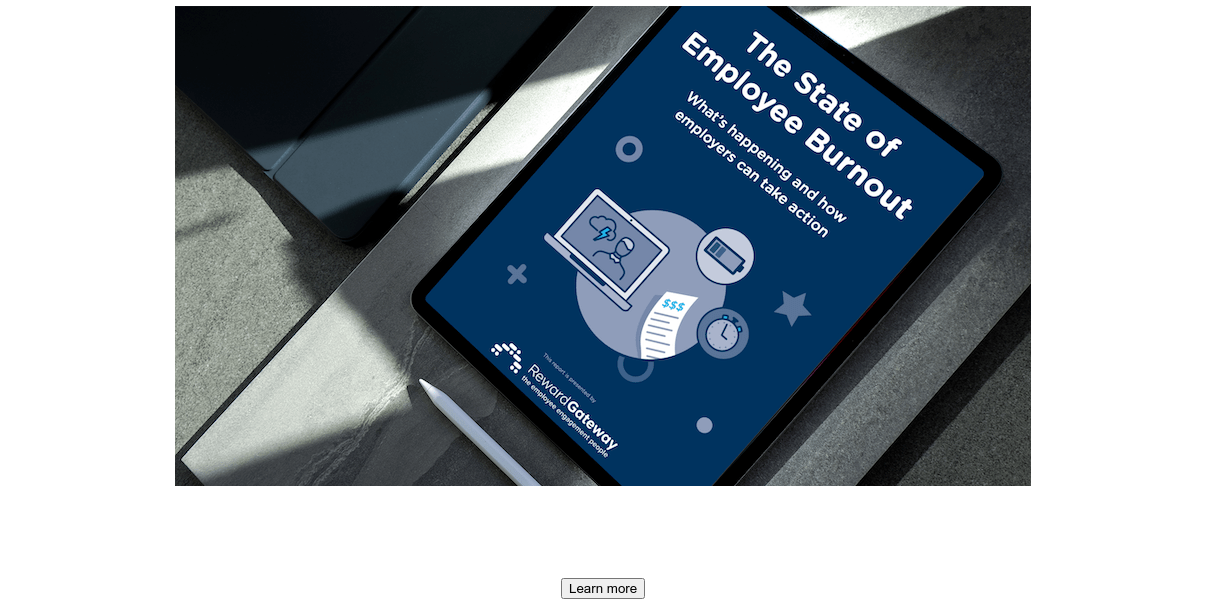Employee burnout is a steadily worsening issue in all industries around the globe for a wide array of reasons – all of which have been exacerbated by the COVID-19 pandemic. And while economies are recovering, the pandemic – and its consequences – are far from over, leaving burnt-out employees struggling to see a way out.
Burnout has many faces, and not every burnt-out employee will display them all – although most are interrelated and rarely appear in isolation.
 I have personally experienced some of these forms of burnout, and have witnessed friends and colleagues suffer as well. It’s important to remember that burnout isn’t always a result of workplace events, and employees’ lives exist outside of their jobs. When grad school left me burnt out and falling behind, I was met with grace and support at work. It mattered.
I have personally experienced some of these forms of burnout, and have witnessed friends and colleagues suffer as well. It’s important to remember that burnout isn’t always a result of workplace events, and employees’ lives exist outside of their jobs. When grad school left me burnt out and falling behind, I was met with grace and support at work. It mattered.
And it’s clear that this phenomenon isn’t unique, with 44% of UK employees saying they frequently experience burnout in a recent Reward Gateway survey of over 3,000 employees and HR leaders worldwide. Burnout has even been named an official international disease by
the World Health Organization.
With nearly half (46%!) of employees worldwide experiencing the effects of burnout, it’s time we talk about it. In this blog, let’s explore the five categories of burnout and how you can spot the warning signs among your own employee base.
| 1. Emotional Exhaustion |
| 2. Cynicism |
| 3. Detachment |
| 4. Inefficiency |
| 5. Feelings of inadequacy |
1. Emotional exhaustion
Employees are more likely to exhibit negative emotions at work and less likely to be able to power through adversity.
When an employee is burnt out, they lack the emotional bandwidth to handle significant changes – in leadership, workload or if a well-liked colleague departs, for example – resulting in an emotional strain that can quickly snowball.
Adversity at work can be as simple as a disagreement in a tense meeting – it might look like a period of increased workloads, pushback against thoughtful suggestions or a frustrating set of hoops they need to navigate. It looks different for everyone. Managers that care – listed as the second-most important employee must-have in our recent report – know that this is why it’s critical to check in on employees both when they are struggling and when they aren’t.
2. Cynicism
They are unable to go with the flow and see the purpose of their work.

Emotional exhaustion breeds cynicism: There is a point at which an employee will simply respond to their day-to-day with 'Why bother?' or 'This is a waste of my time.' 24% of employees reported in Reward Gateway’s burnout survey that they no longer go above and beyond at work – which can often look like (or lead to) 'quiet quitting.' It can be tough to hear that your employees don’t care about your best-intentioned initiatives, such as when you’re trying to introduce a tool that actually benefits them. But it’s also important to hear it.
3. Detachment
They are disengaged emotionally from their work and from others.
Detachment is another aspect – and result – of the emotional exhaustion that burnout breeds in workforces. In fact, detachment is arguably the first sign of burnout, which leads to emotional exhaustion – and then cynicism. If an employee loses sight of what makes their work valuable, or they feel insufficiently recognised for their work, it’s quite easy for their outlook to lose its drive. The same goes for their interest in teamwork, or even general socialisation. They’re also less likely to attend social functions – but don’t rely on event attendance to indicate burnout, as there are many factors that influence those decisions.
4. Inefficiency
They are distracted and unable to focus on tasks, or they take on too many tasks simultaneously and cannot complete them.
 A common origin of burnout is either prolonged heavy workloads and/or inconsistent task assignments, for example. This particular kind of burnout is the most commonly noticed because this is where it affects their team’s ability to do their work efficiently. This can look like procrastination from employees who had previously been consistently on top of things. It could also look like an employee who is taking on many extra tasks and then struggling to complete them in a timely manner.
A common origin of burnout is either prolonged heavy workloads and/or inconsistent task assignments, for example. This particular kind of burnout is the most commonly noticed because this is where it affects their team’s ability to do their work efficiently. This can look like procrastination from employees who had previously been consistently on top of things. It could also look like an employee who is taking on many extra tasks and then struggling to complete them in a timely manner.
As we’ve noted, this inefficiency also affects the employee’s mental state and confidence at work, creating a vicious cycle of increasing emotional exhaustion, shortening fuses on tempers, broken resilience and overall feeling begrudged about their daily to-do’s.
5. Feelings of inadequacy
They doubt themselves and their ability to perform and support the team at work.
Feeling buried under work leads directly to feeling inadequate or, sometimes, like a burden on one’s team. When someone feels like they’re failing or just struggling to keep up, it’s easy to fall back on self-doubt and -criticism. Who among us hasn’t had a personal pity party?
It’s easy for small problems in a worker’s day-to-day to merge into much bigger problems – the further someone falls behind, the less likely they are to ask for help, especially if they aren't part of an environment that promotes open and honest communication around mental health.
For more information on how to combat workplace burnout – and keep your employees engaged – keep an eye out for our next blog to learn what you can actually do about employee burnout when you spot these telltale signs.

 Emily Mellwood
Emily Mellwood

